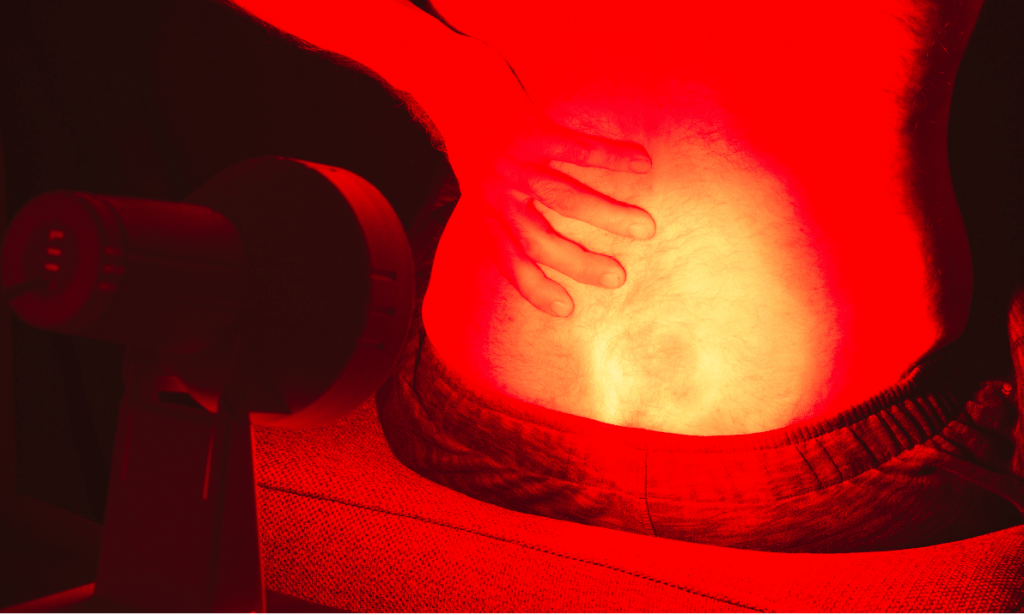Who would have thought that a plant-growing space light could do so much? From accelerated healing of skin and muscle tissues to an exploratory treatment for cases of osteoarthritis, dementia, and even hair loss, red light therapy – aptly abbreviated to RLT – has been gaining traction in the media for its plethora of potential cosmetic and medical applications.
A couple of questions you may be asking that will be covered in this article:
- What actually is it?
- How does it work?
- What is it used for?
- How do I use it?
- Is it safe to use?
Red Light Therapy is marketed as a holistic alternative to traditional western medicine ailment-and-anti-inflammatory treatments, and that it is. Before we get into the nitty-gritty, however, check out The 9 Best At-Home Red LED Light Therapy Device Reviews 2020: Facial, Handheld & Full Body Devices on OGLF(Our Good Living Formula), and explore some of the top-of-the-line device options available.
What is Red Light Therapy?
Red light therapy is an alternative therapy that uses low levels of infrared red light to penetrate the barriers of tissue into the body’s dermal layer and increase the amount of available energy produced by the body’s mitochondria; the powerhouses of the living cell, as we all know. In theory, this surplus of cellular energy in the form of adenosine triphosphate, aka ATP, should cause cell healing to occur at an accelerated rate and thus provide not only the benefits mentioned above but many more.
In itself, Red Light Therapy is an incredibly young and still emerging treatment method. Still, the research that exists speaks to its potential applications in a way that is greatly positive, and the existence of RLT as being both an innovative and doubly useful solution to common human maladies is very much a thriving one.
How does it work?
Adenosine Triphosphate (ATP) is known as the body’s energy currency. It’s essentially the gasoline that supplies every single cellular engine in our body, and we could not live without it. Red Light Therapy works by infiltrating the body’s cells and influencing the mitochondria to produce larger amounts of ATP, and thus, more energy for cellular processes such as healing, pain relief, and skin health maintenance — to name a few.
Collagen and elastin production are also reportedly increased from red light therapy, and this happens in the same way that RLT penetrates cells and mitochondria: Light waves absorb deep into the skin and stimulate the rapid synthesizing of these connective substances within.
What is it used for?
Red Light Therapy has numerous uses, and some of these include:
- Improvements to skin complexion and acne management, wherein RLT has been shown to have the potential to act on the sebaceous glands and pores of the skin of the face and reduce skin inflammation
- Faster hair growth
- Tissue and wound healing, including helping to repair sun damage
- Reduced inflammation of muscles and joints
- Accelerated production of collagen, leading to effects such as increased skin elasticity and hair strength
Red Light Therapy also has the stamp of approval from the Federal Drug and Food Administration (FDA); they approve RLT as a treatment for acne, as an anti-aging tool, and for general pain management.
How do I use it?
There are many ways to get access to a Red Light Therapy device for use, but the two most popular options are:
- At one’s local dermatologist;
- Conducting research and then buying a Red Light Therapy device of one’s own
Red Light Therapy has been quoted as costing anything between $25-85 for a half-hour treatment, and device prices range to an even higher degree. The aforementioned article The 9 Best At-Home Red LED Light Therapy Device Reviews 2020: Facial, Handheld & Full Body Devices on Our Good Living Formula has the highest-and-most-recently-rated guide for Red Light Therapy devices, and is a must-read for anyone considering at-home device options!
Is it safe to use?
The safety of Red Light Therapy has seldom been brought up in the past as a barrier to new users trying it out. RLT has also been identified as safe by the FDA, and there are no known adverse acute or chronic side effects to using RLT in the way that it is directed, and/or under the guidance of a professional.
In addition to this, the nature of infrared light means that the actual light itself is invisible to the naked human eye. Because of this, traditional risks involved with light therapy such as eyestrain, headache, and any other visual disturbances have never even been noted in research on RLT.
So, what now?
Athletes, coaches, and celebrities alike have used Red Light Therapy and shared with their audiences the praises they have for it:
- One of the greatest strength coaches of our time, the late Charles Poliquin, touted Red Light Therapy for its insane benefits to athletes in terms of muscle recovery from workouts
- TJ Dillashaw, a mixed martial arts bantamweight and ranked fighter for the UFC swears by his RLT device for providing him with similar benefits as Charles Poliquin, and a serious edge over his competition as a result
- Celebrities such as Kim Kardashian, Chrissy Teigen, and Lena Dunham have all spoken about using RLT for its skin-healthy benefits; these include evening out skin tone and fighting visible signs of ageing
The science so far is nothing short of compelling, and the breadth and depth of issues that RLT has an application for are extensive. Red Light Therapy proposes a solution to a variety of ailments that, at one point, every single one of us have had to experience at least one of. Whether it be to decrease inflammation in joints or muscles, battle chronic or acute pain, speed up healing, or for cosmetic reasons only – Red Light Therapy has its place among the ranks as a viable treatment option.



